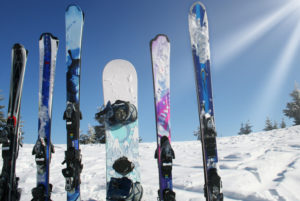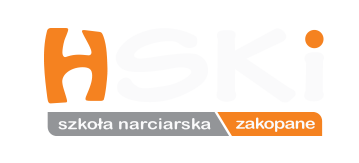
24 Nov How to select ski equipment correctly?
Selection of skis
When selecting skis, we should take into consideration our skills, height and weight. We also need to ask ourselves a few questions. Answers for these questions will simplify a finding of „perfect” skis for us and allow to withdraw from unwanted troubles on ski slope.
- How many days in a year do we spend on skiing?
- What kind of pistes do we choose (difficult, medium or easy)?
- How many years do we practise this sport discipline?
- Which style of skiing do we prefer (more technical skiing on very returnable skis with short turning radius, or maybe a little longer, faster skis with long turning radius)?
When buying, we should not always be influenced by the price – let’s try to select skis that are the best in relation to our skills.
For several years there is a trend of shortening of length of selected skis, however let’s not go to extremes – too short skis may cause negative change of center of gravity, they are not much stable and at high speeds they often come out of turns.
Optimal length of skis
The best solution are skis reaching to level of our chin or forehead, that is skis with shorter turning radius. For beginners we select skis on the level of chin (about 15 cm below the height). Skis for people riding in a more aggressive way – the length near the skier’s height. After buying skis we need to remember about proper setting of force of bindings opening – a professional service will do it the best.
In sport shops w may find skis designed only for women. Their hallmark is special design – it is also an element of fashion and attempt to suit skis to dress and character. Lady’s skis are also made in different production technology – above all, they are lighter from those designed for men of about 15 – 20%, they have also moved center of gravity more forwards and slightly lifted bindings back to simplify bending knees and more secure „holding” and control of skis.
Skis for children
For children, the selection of skis is easier. The majority of producers offers skis on composite core, more elastic, lighter and destined to kids with intermediate technique of skiing. For children with vast experience, liking the competition and speed, we propose skis with wooden core, more rigid, faster and more difficult.
The selection of skis for children is similar to that in case of adults, that is about 15 cm below the height. The exception are children at the age of 3-5 years old – for them we select skis on the level of xyphoid process. We need to remember that purchase of skis for our kids needs to happen every season, maximally every two seasons. The selection of too long skis will cause difficulties in learning of basic skiing technique and may occur the reason of child’s discouragement to practising this amazing sport discipline.
Ski boots
The selection of ski boots is much more complicated and requires patience and, not infrequently, help from expert. The most important in ski boots is toughness of boot, in skier’s language called FLEX INDEX. Toughness of ski boot defines purpose and, in a way, convenience and comfort. We assume three scales of toughness of ski boots:
- Soft ski boots – toughness from 40 to 60 (flex index), dedicated to beginners, appreciating comfort and convenience; at the same time such ski boots do not allow us to reach dizzying speeds on ski slope due to much lesser „holding” of skis and, what goes with it, lesser control of them.
- Medium ski boots – toughness from 60 to 80 (flex index) – ski boots tough like this we recommend to skiers of diversified skills and intermediate level. These ski boots are most frequently purchased in Poland and, what goes with it, we have the largest selection of them.
- Hard ski boots – toughness from 90 to 140 (flex index) – these are tough and challenging ski boots for experts, instructors and perfect skiers.
Decision to buy ski boots on the basis of colour or price is a mistake which will have adverse effects for skiing technique and skier’s comfort. The important hint is information, to not buy ski boots „one size bigger”, because ski boot during exploatation works along with skier and increases its volume inside by about 3-5 mm. We need to remember that all needless movements of foot in a boot have negative influence on its cooperation with ski.
We cannot forget that ski boots do not soak through and the wet sock is an effect of significant heat dissipation and perspiration, so wearing two pairs of socks will not hold back this process – just the opposite, so why to tire feet?
Lady’s ski boots have slightly different construction, they are lighter and lower with characteristic indentation for a calf. Additional asset of lady’s ski boots is thicker warm lining of boot filler, as women more often than men suffer from feet hypothermia (particularly of toes). Scales of toughness are similar to ski boots for men.
When purchasing ski boots for a child we need to be influenced most of all by appropriate selection of toughness, but also of proper size. It is not allowed to provide our kid with ski boots for 3-4 seasons. The child should not have too big boots due to increased risk of injury. Of course, selection of bigger ski boots is admissible, but just like in case of sport shoes, up to 1-1,5 cm.
The simplest rule when buying ski boots: after putting on and fastening of ski boot in a standing position, with straight stifle, a big toe should gently touch front part of a boot and while pressing on shin, a fot should back off and in a front part of a boot we should feel a little space.
We select ski poles
The integral attribute of every skier are ski poles. We need to remember to buy ski poles which are equipped with protective strips and plates.
When selecting ski poles you should turn one pole upside down, holding it under a plate we set the pole beside us (we lean a handle on the ground). Ski pole is correctly suited when forearm creates right angle with arm.


No Comments